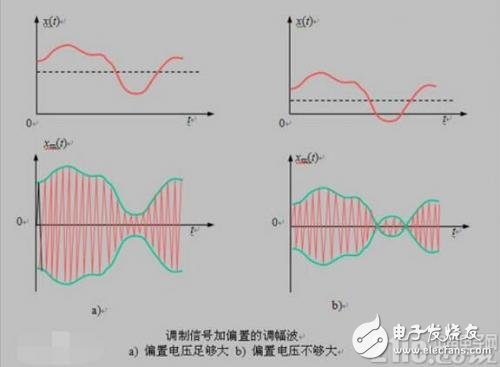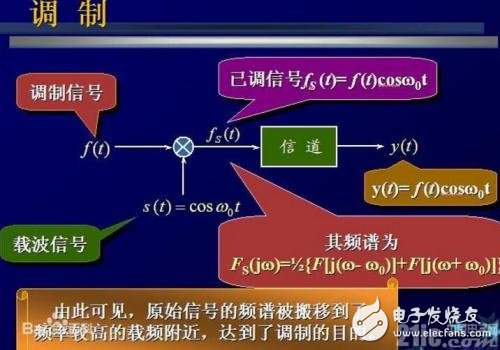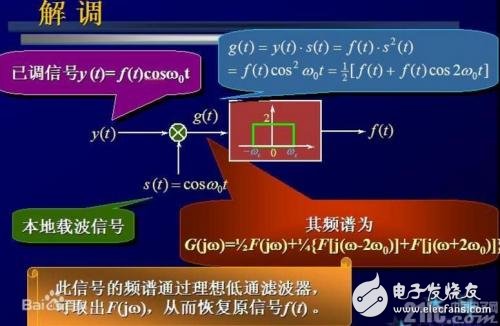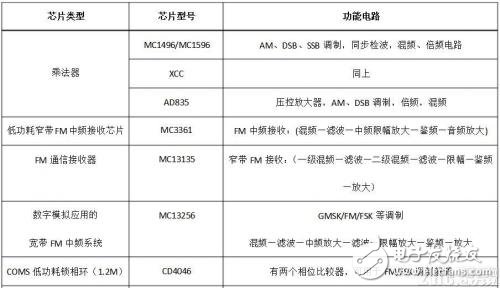Modulation is to use the baseband signal to control the change of one or several parameters of the carrier signal, and load the information on it to form a modulated signal for transmission, while demodulation is the reverse process of modulation, from which the parameters of the modulated signal are obtained through specific methods. The original baseband signal will be restored during the change. The purpose of modulation is to transform the analog signal or digital signal to be transmitted into a signal suitable for channel transmission, which means that the baseband signal (source) is transformed into a bandpass signal with a very high frequency relative to the baseband frequency. This signal is called a modulated signal, and the baseband signal is called a modulated signal. Modulation can be achieved by changing the amplitude, phase, or frequency of the high-frequency carrier with the signal amplitude. The modulation process is used at the origin of the communication system. At the receiving end, the modulated signal needs to be restored to the original signal to be transmitted, that is, the baseband signal is extracted from the carrier for processing and understanding by the intended recipient (sink). This process is called demodulation. There are many types of modulation, and the classification methods are also inconsistent. According to the form of modulation signal, it can be divided into analog modulation and digital modulation. Modulation with analog signals is called analog modulation; modulation with data or digital signals is called digital modulation. According to the type of modulated signal, it can be divided into pulse modulation, sine wave modulation and intensity modulation (such as incoherent light modulation) and so on. The modulated carrier waves are pulses, sine waves, and light waves. Sine wave modulation has three basic methods: amplitude modulation, frequency modulation and phase modulation. The latter two are collectively called angle modulation. In addition, there are some variant modulations, such as single sideband amplitude modulation, vestigial sideband amplitude modulation, and so on. Pulse modulation can also be classified in a similar way. In addition, there are composite modulation and multiple modulation and so on. Different modulation methods have different characteristics and performance. Demodulation is the process of recovering a message from a modulated signal that carries the message. In various information transmission or processing systems, the sender modulates the carrier with the message to be transmitted to generate a signal that carries this message. The receiving end must recover the transmitted message before it can be used. This is demodulation. Demodulation is the inverse process of modulation. The modulation method is different, and the demodulation method is also different. Corresponding to the classification of modulation, demodulation can be divided into sine wave demodulation (sometimes called continuous wave demodulation) and pulse wave demodulation. Sine wave demodulation can be further divided into amplitude demodulation, frequency demodulation and phase demodulation. Similarly, pulse wave demodulation can also be divided into pulse amplitude demodulation, pulse phase demodulation, pulse width demodulation and pulse code demodulation. For multiple modulation, multiple demodulation is required. The demodulation methods include sine wave amplitude demodulation, sine wave angle demodulation and resonance demodulation technology. According to the modulation method, it can be divided into two categories: linear modulation and non-linear modulation. Linear modulation includes amplitude modulation (AM), suppressed carrier double sideband amplitude modulation (DSB-SC), single sideband amplitude modulation (SSB), vestigial sideband amplitude modulation (VSB), etc. Non-linear amplitude modulation has strong anti-interference performance, including frequency modulation (FM), frequency shift keying (FSK), phase shift keying (PSK), differential phase shift keying (DPSK), etc. The characteristic of linear modulation is that it does not change the original frequency spectrum structure of the signal, while the nonlinear modulation changes the original frequency spectrum structure of the signal. According to the modulation method, modulation can be divided into continuous modulation and pulse modulation. According to the modulation technology, it can be divided into analog modulation technology and digital modulation technology. The main difference is: analog modulation is to continuously modulate certain parameters of the carrier signal, and the modulation parameters of the carrier signal are continuously estimated at the receiving end, while the digital modulation technology Modulation uses some discrete states of the carrier signal to characterize the transmitted information, and only the discrete modulation parameters of the carrier signal are detected at the receiving end. Modem is also called Modem, which is a necessary hardware device for dial-up access to the Internet via telephone. Usually the computer uses the "digital signal", and the signal transmitted through the telephone line is the "analog signal". The function of a modem is to convert the digital signal used inside the computer into an analog signal that can be transmitted by the telephone line when the computer sends information, and send it out through the telephone line; when receiving information, it converts the analog signal from the telephone line into a digital signal Send it to the computer for its reception and processing. Summary of modem chip models The motor wire also apply to automotive, bus, bike, truck. Yacenter have 19 years experience in wire harness industry, cooperate with Nisson, BMW, GM, HONDA, Mitsubishi
Yacenter
has experienced QC to check the products in each process, from developing
samples to bulk, to make sure the best quality of goods. Timely communication
with customers is so important during our cooperation.
If you can't
find the exact product you need in the pictures,please don't go away.Just contact me
freely or send
your sample and drawing to us.We will reply you as soon as possible. Please tell us what kind of
model you need (including the drawings, specification, or samples) , then the
price will be sent to you soon.
Motor Wiring Harness,Motors Radio Wiring Harness,General Motors Wiring Harness,Motor Power Wiring Harness Dongguan YAC Electric Co,. LTD. , https://www.yacentercn.com




What is modem, what is its function, and what types are there?
What is modem